|
Acalymma vittatum: Striped Cucumber Beetles enjoy the cucurbitacins cucumbers have developed
as a herbivore defense in both larval and adult forms,. This one though was on a Lilium.
Length 5 mm.
| |
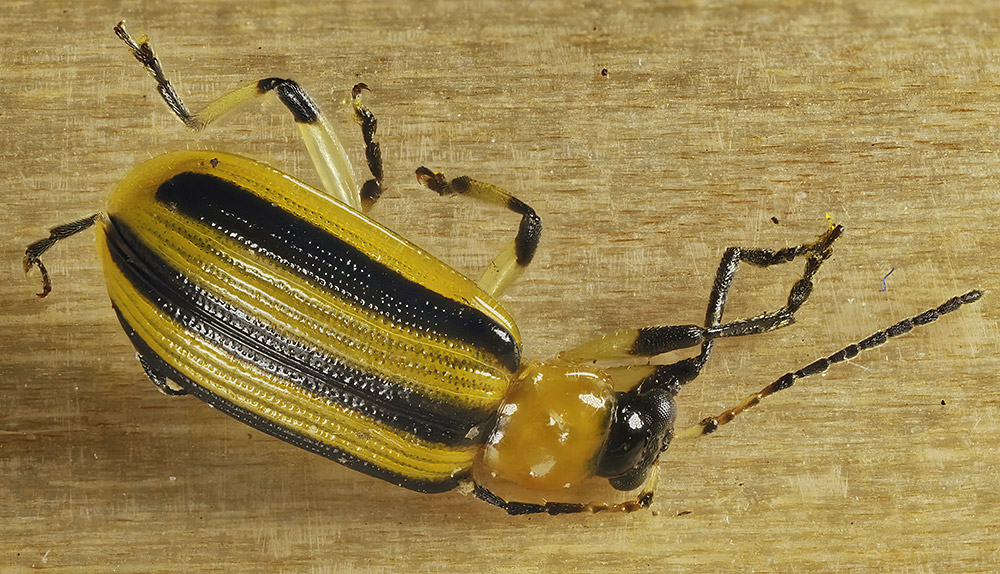

|
|
Agriotes fucosus: Click beetles can latch their prosternum to their mesosternum, producing a
loud click which bounces the beetle into the air. Clicking is mainly used to avoid predation,
although it is also useful when the beetle is on its back and needs to right itself. Length 11 mm.
| |
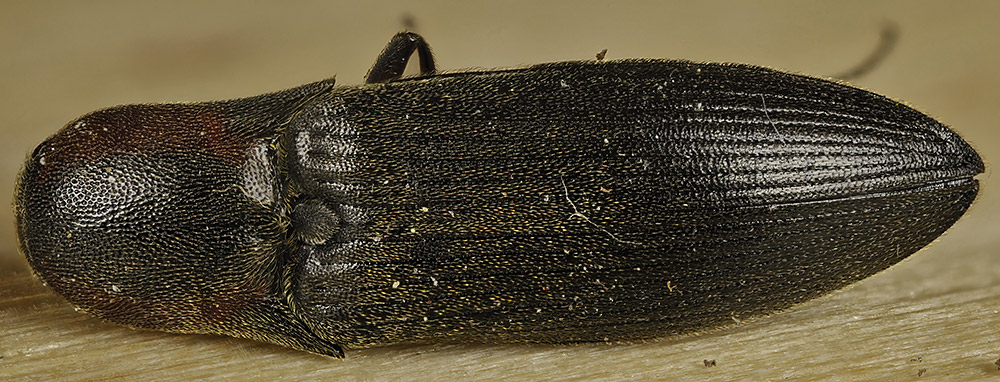

|
|
Anisodactylus: These beetles eat seeds both as larva and as adult. Length 11 mm.
| |
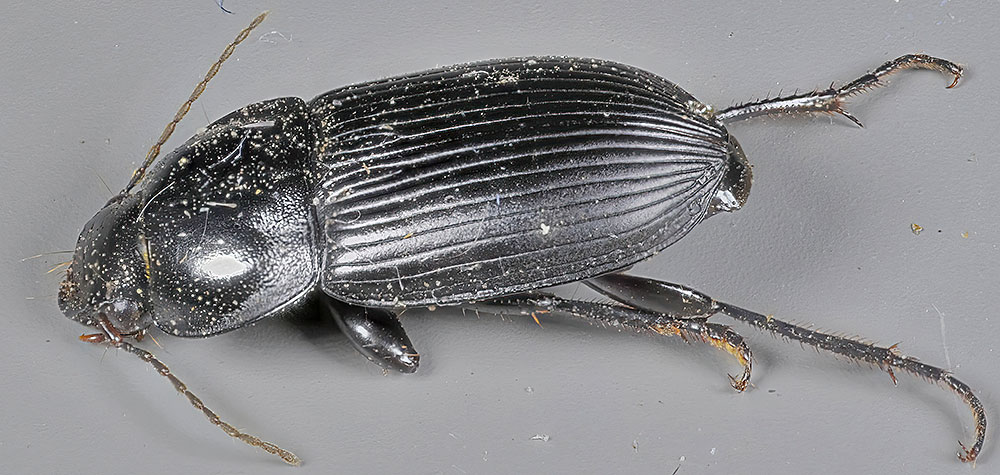

|
|
Anthrenus fuscus: Most of these beetles eat pollen, but some are notorious for eating museum
specimens and carpets; their larvae feed on decaying plants or animals. Length 2.5 mm.
| |
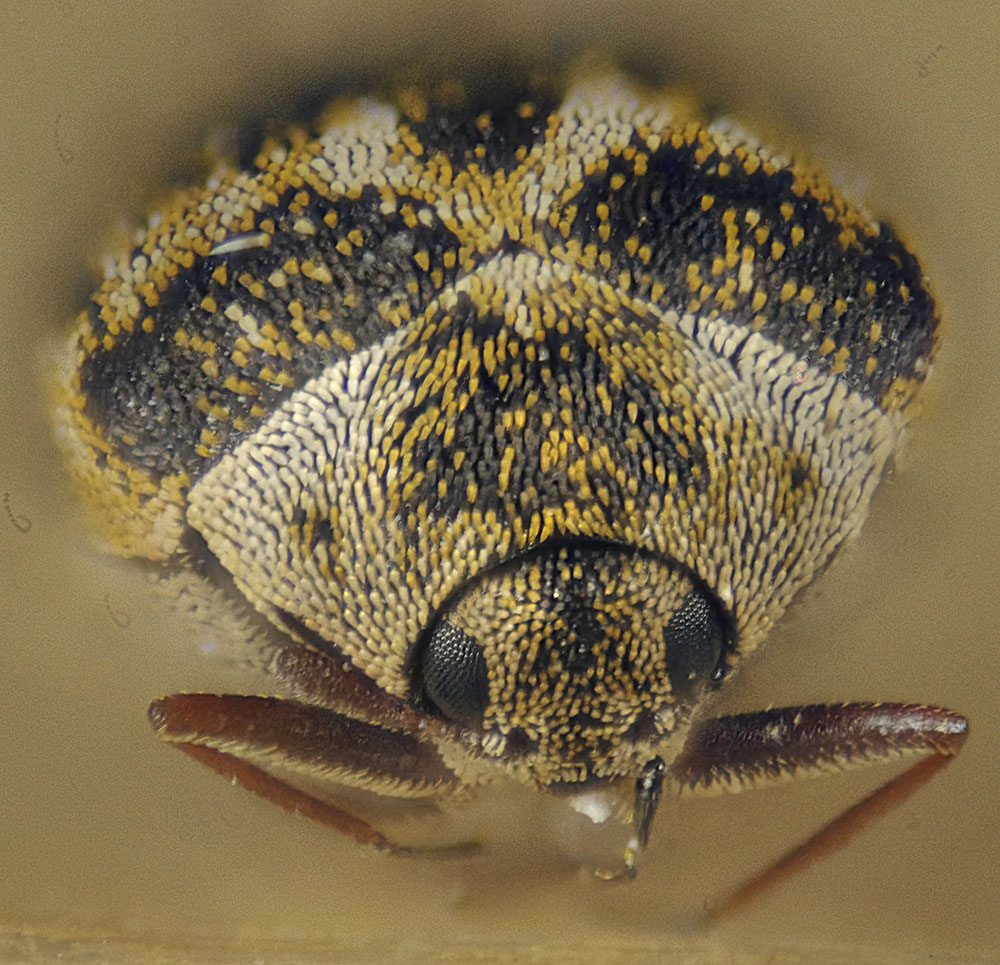

|
|
Atalantycha neglecta: Soldier beetles eat aphids both as adults and as larvae; they are
sold as biological control agents. Length 10 mm.
| |
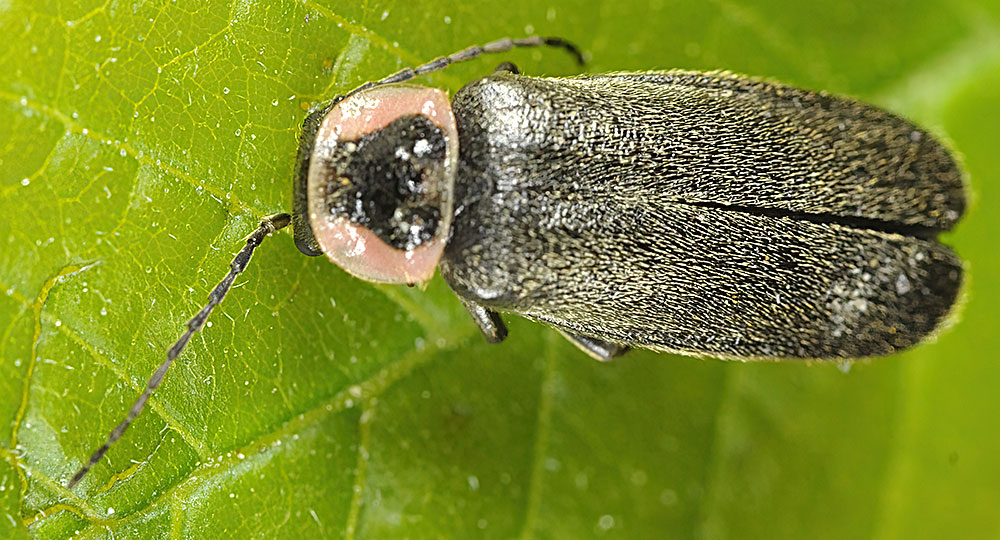

|
|
Baris/Cyphirhinus: This long-nosed weevil lives mostly on Asteraceae. Length 3 mm.
| |
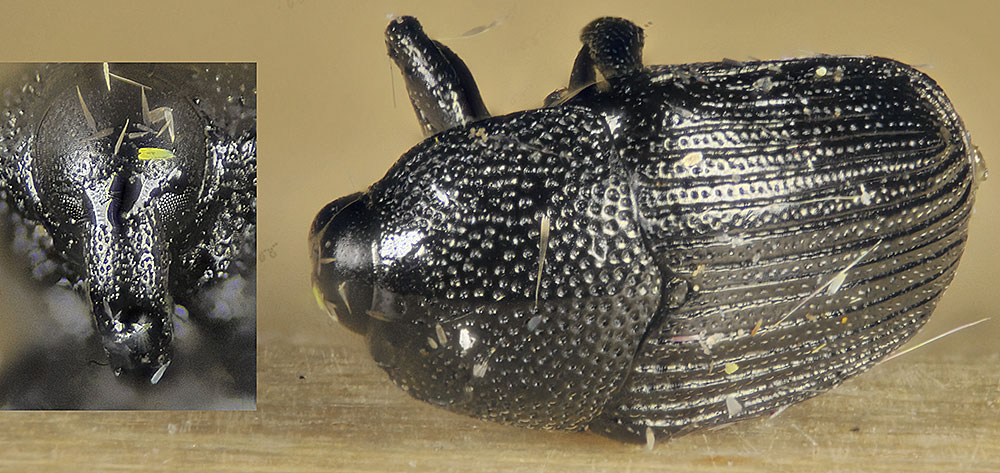

|
|
Brachiacantha ursina: A native ladybug beetle that is often found on Asclepias. Length
4 mm.
| |
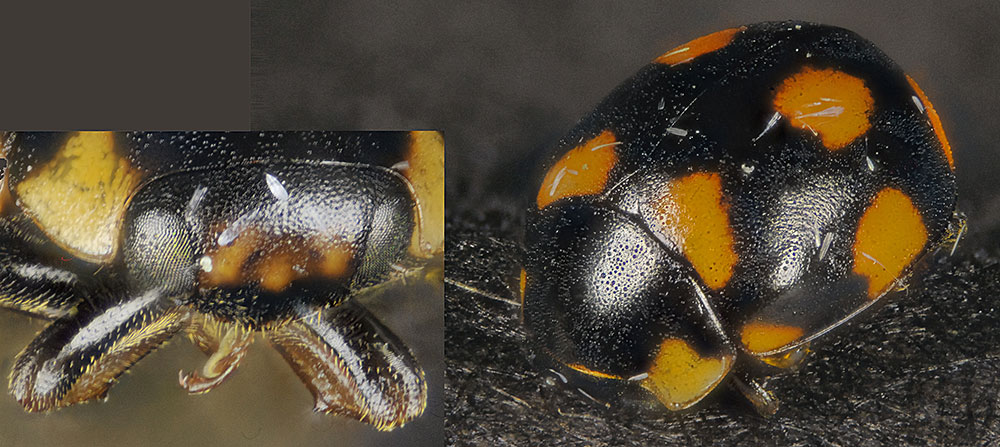

|
|
Calleida punctata: This beetle is an active nocturnal hunter of small insects. Length 7 mm.
| |


|
|
Chauliognathus pensylvanicus: Goldenrod Soldier Beetles live on pollen and nectar of fall
flowers; their larvae are carnivorous, eating aphids and insect eggs. Length 10 mm.
| |
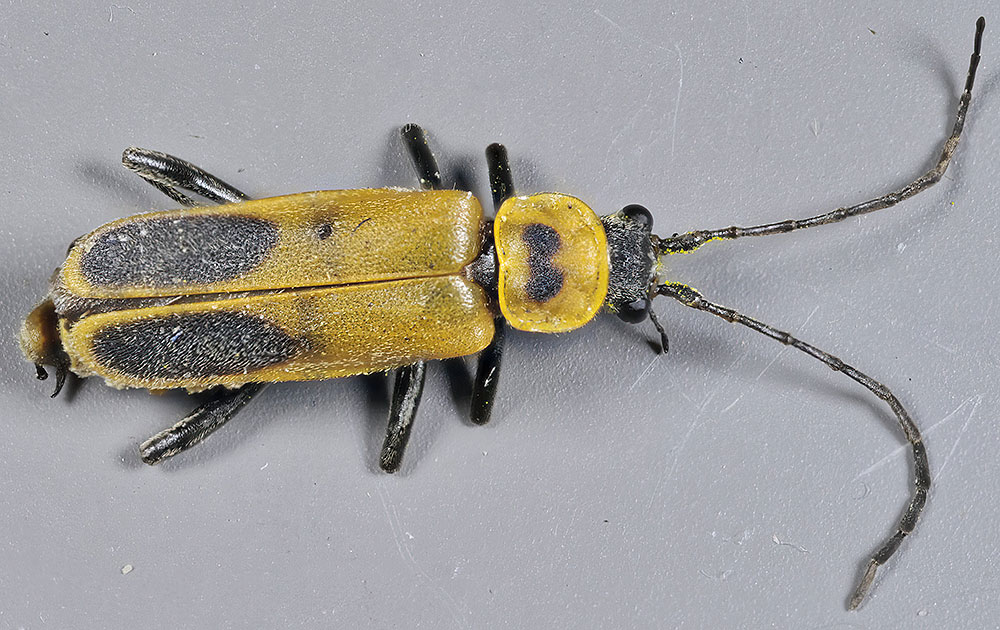

|
|
Cicindela sexguttata: This tiger beetle is unmistakable. As you can see from its massive trademark white jaws,
it lives by eating other insects. Length 12 mm.
| |
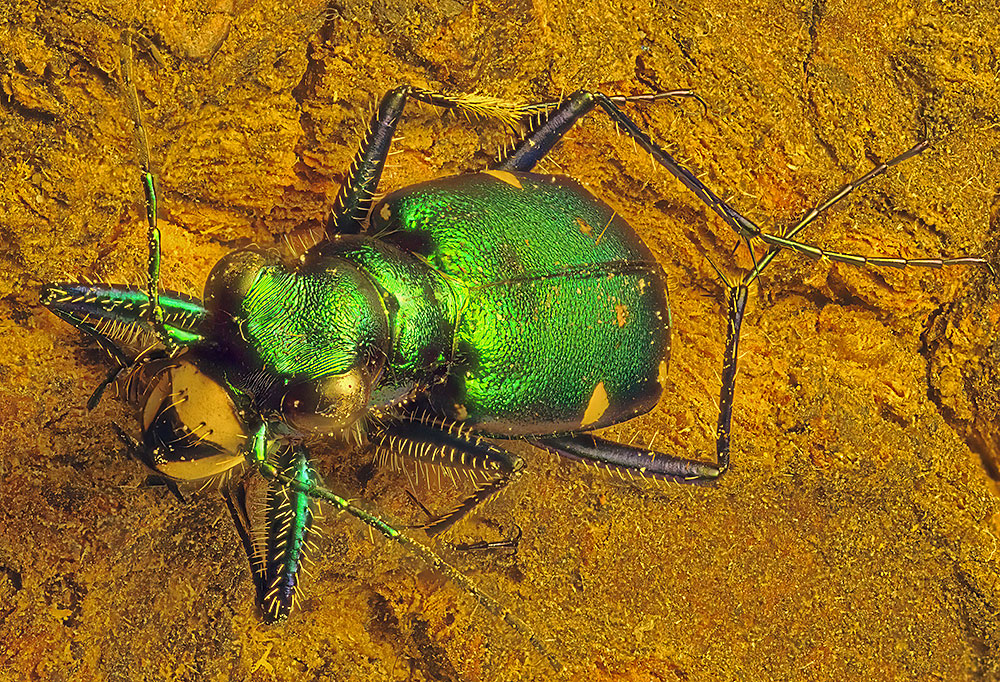

|
|
Coccinella septempunctata: Both the adults and the larvae of the Seven Spotted Lady Beetle
are voracious predators of aphids. It has been repeatedly introduced to North America from its
native Europe as a biological control agent to reduce aphid numbers. Length 5 mm.
| |
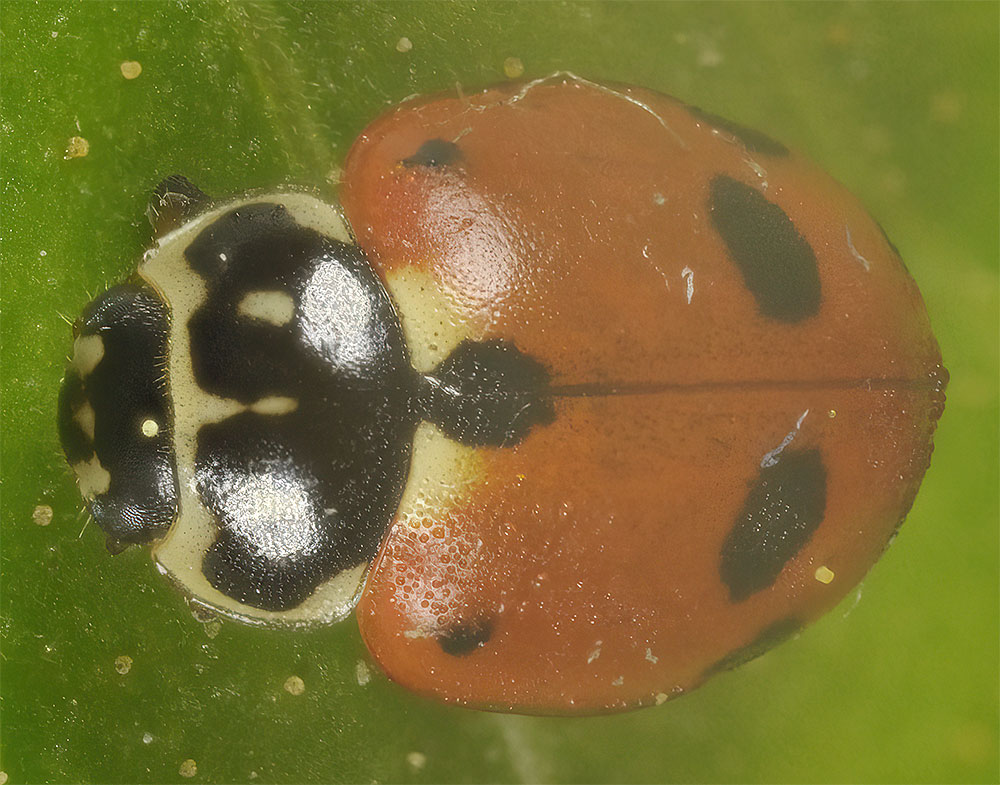

|
|
Coleomegilla maculata: This is one of our native ladybugs. As do all the others, it feeds
on aphids both as adult and as larva. Length 7 mm.
| |
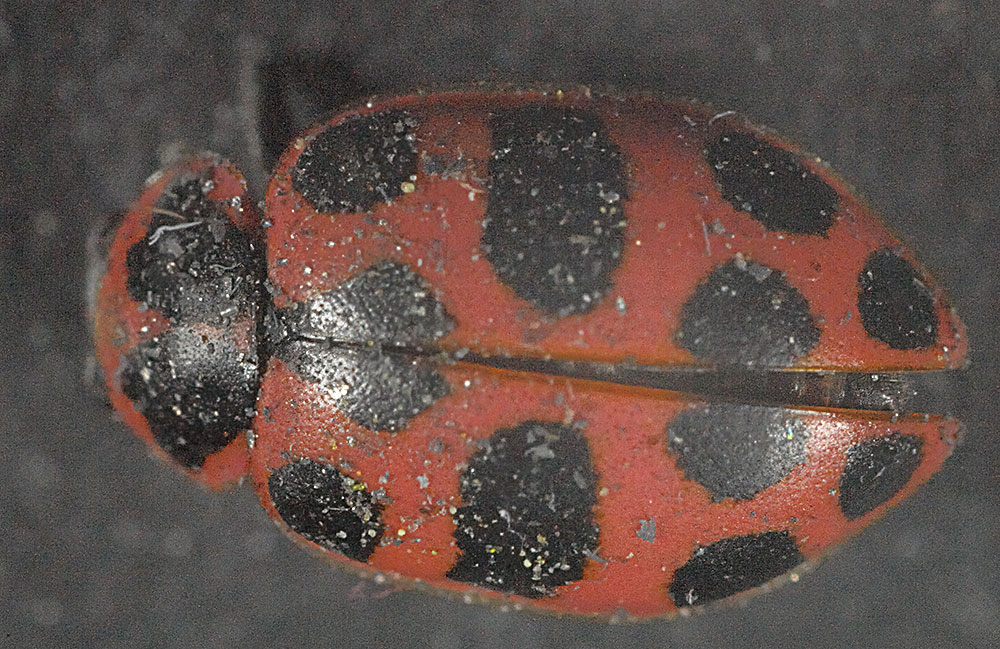

|
|
Dyschirius dejeanii: This little beetle is a subterranean burrower, as its massive front
leg muscles show. Length 3 mm.
| |


|
|
Ellychnia corrusca: A diurnal beetle closely related to fireflies but without light
emitting organs. As with others in the family, its head hides completely under its pronotum.
Length 11 mm.
| |
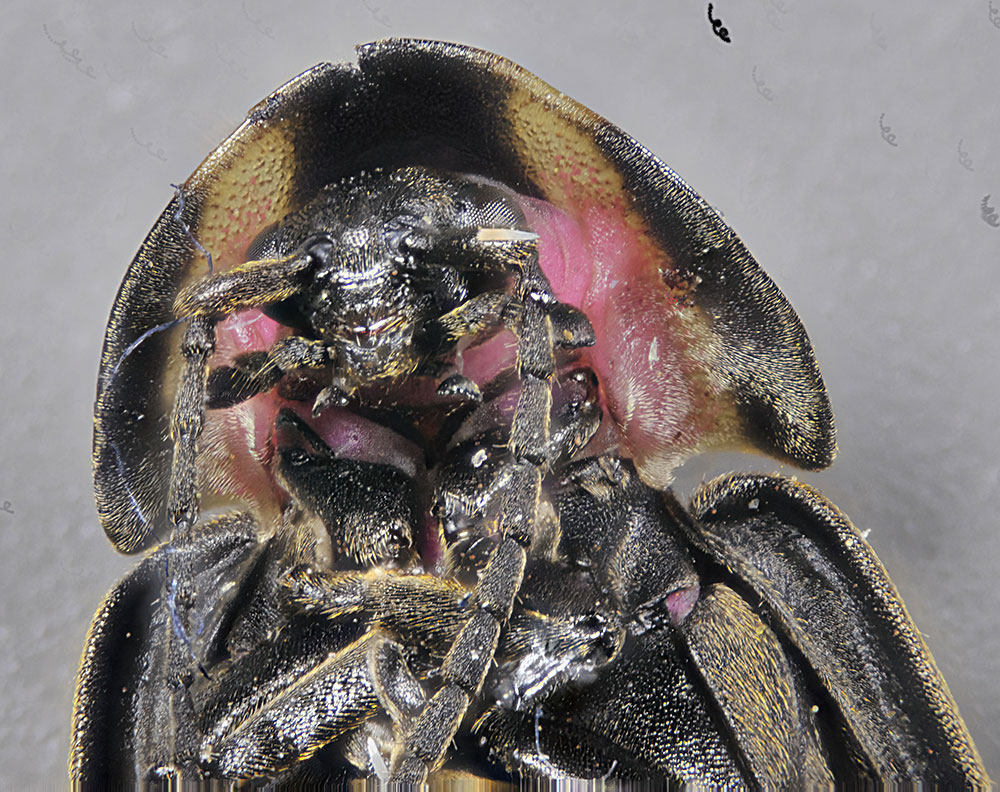

|
|
Harmonia axyridis: The Asian Lady Beetle was introduced by the USDA from eastern Asia to
control aphids on commercially valuable crops. After numerous attempts over half a century, they
finally succeeded in the late 1980's. Soy farmers are grateful, but the alien now so outnumbers
our native ladybugs that I hardly see any of them any more.
Length 6 mm.
| |


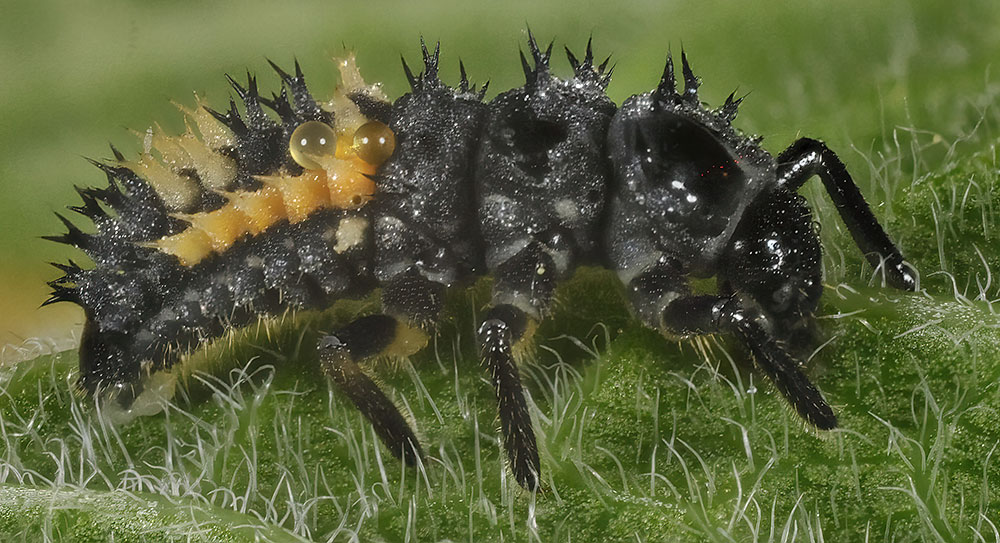

|
|
Harpalus affinis: The larvae of this carabid beetle feed on small soil invertebrates;
adults feed on seeds, particularly of Poaceae, Apiaceae and Asteraceae. Length 10 mm.
| |
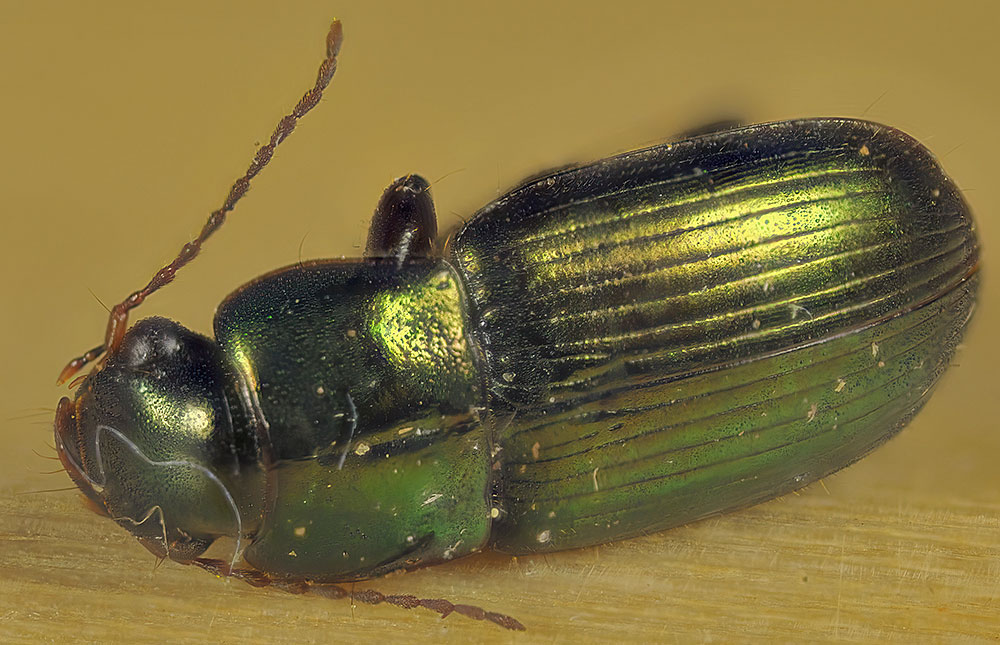

|
|
Harpalus pensylvanicus: This is one of the most common carabids in North America.
Length 16 mm.
| |
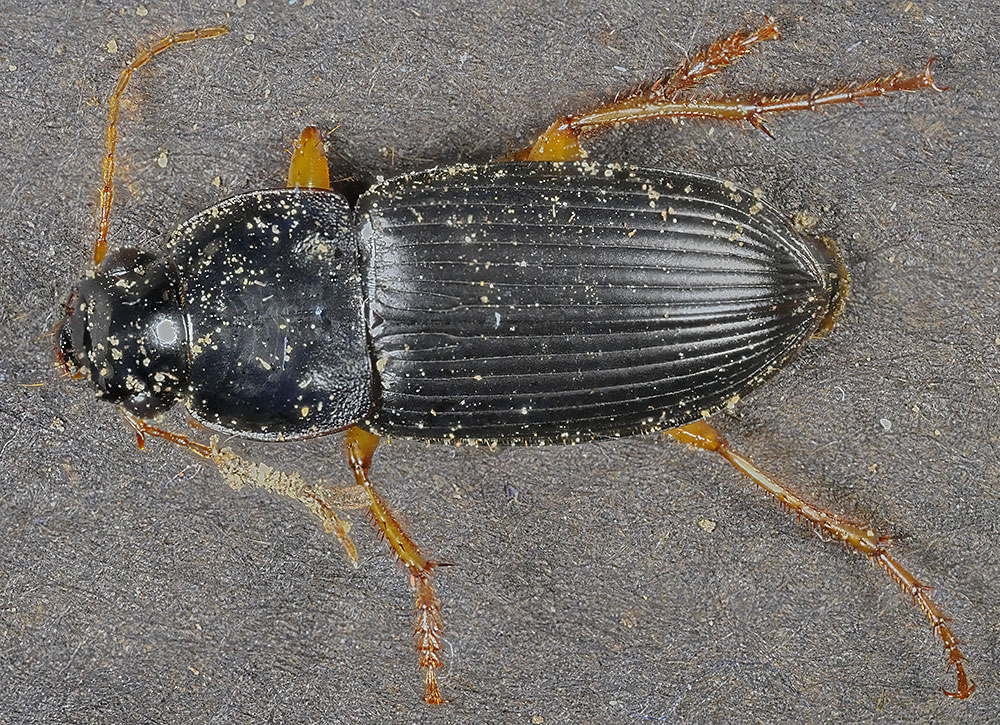

|
|
Lilioceris lilii: Lily Leaf Beetles appear in May and head straight for the nearest
Liliaceae. Native to Europe and Asia, they arrived in Canada about 1945. They are quick to dodge,
but are picked off when spotted. The larvae are gooey black gobs that carry their excrement on
their backs to deter predators. They eat Lilium to death from the underside of leaves so are wiped
off when spotted. Length 12 mm.
| |
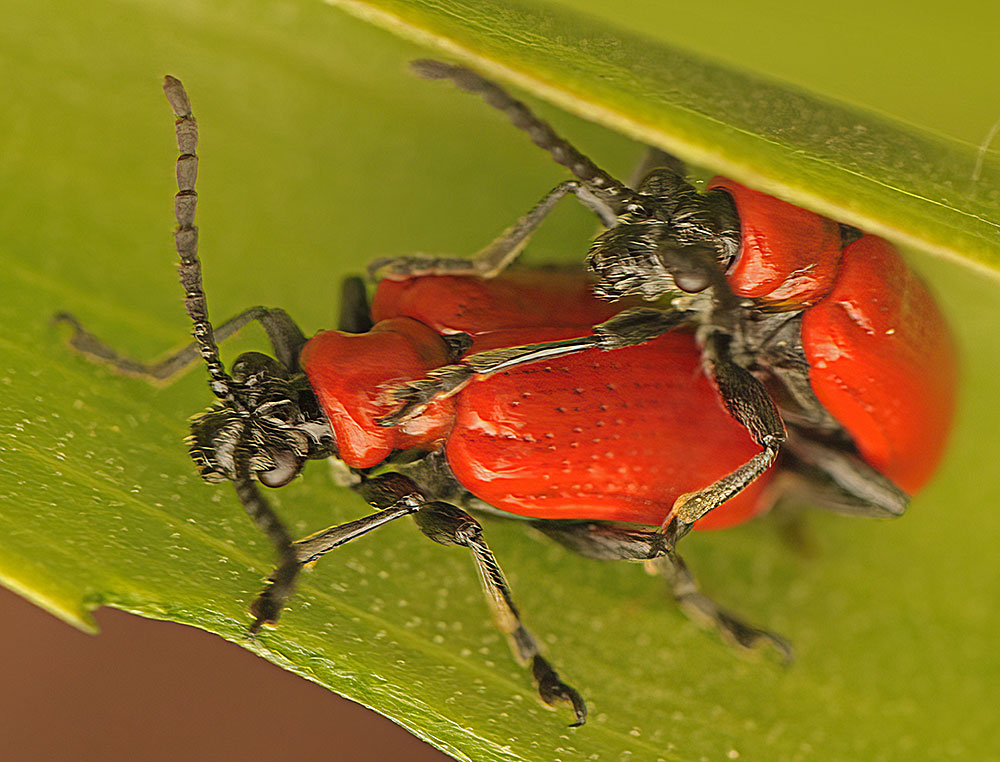

|
|
Lygaeus kalmii: Small Milkweed Bugs, as the name implies, usually frequent Asclepias in the
nearby meadow, but this one is on Taraxacum officinale. Length 10 mm.
| |
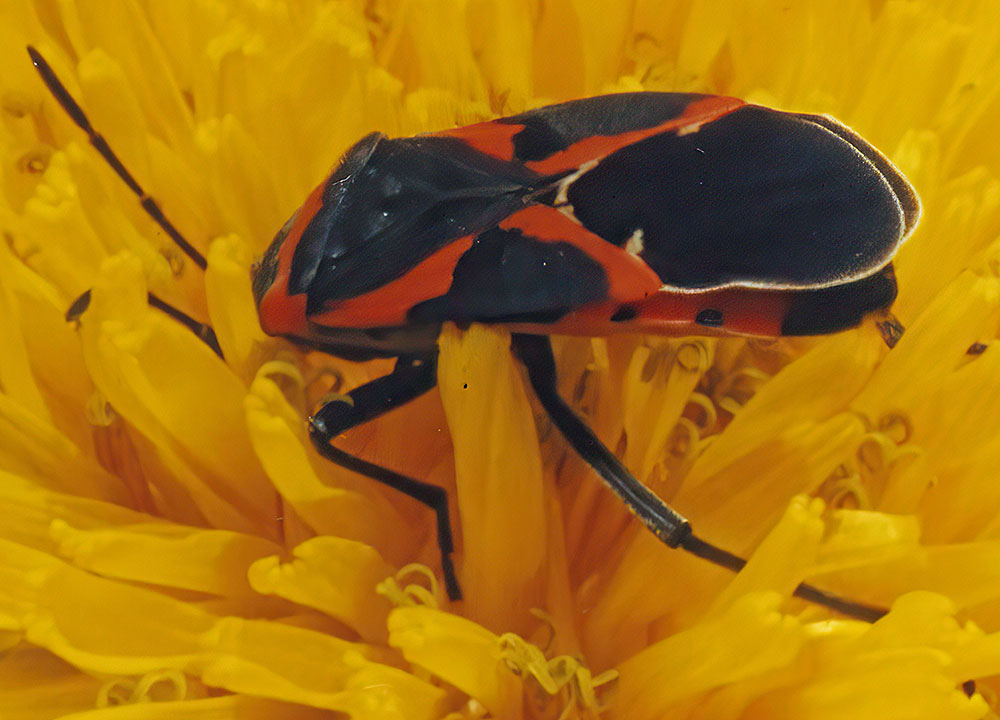

|
|
Meloe niger: Blister beetles are flightless, and discharge oils that blister skin when
threatened. Adults emerge en mass and live only long enough to mate and lay eggs. They
disperse by mimicry: the young larvae climb up a plant stem and form a cluster that
smells like a female
bee. When the male bee is fooled, they climb aboard, transfer to a female when the male
locates a real one, then end up in the female's burrow eating the pollen and honey stored by the
bee for its own larvae, pupating, finally climbing out to repeat the cycle. It's all encoded in
their DNA. Incredible! Length 30 mm.
| |
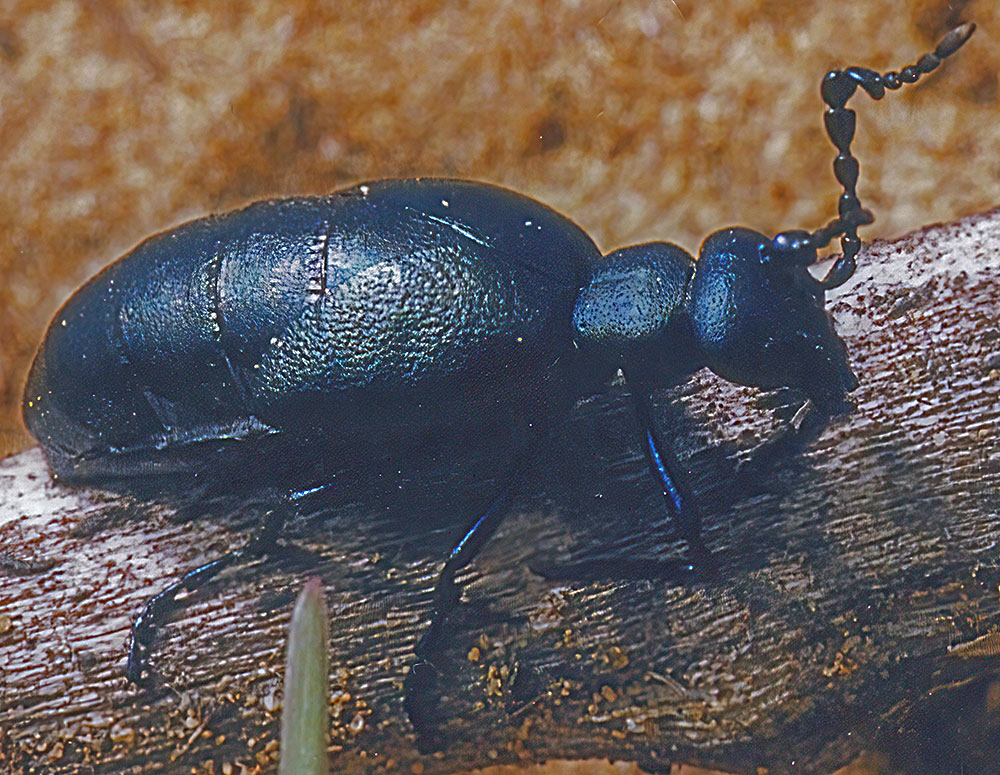

|
|
Necrophila americana: This carrion beetle lays its eggs in dead animals and fungi. The
larvae and adults also consume fly larvae and the larvae of other carrion beetles that compete
for the same food sources. Length 15 mm.
| |


|
|
Nemognatha nemorensis: A blister beetle whose larvae find an underground bee's nest then feed
on the food the bee brings for its larvae. Length 7 mm.
| |
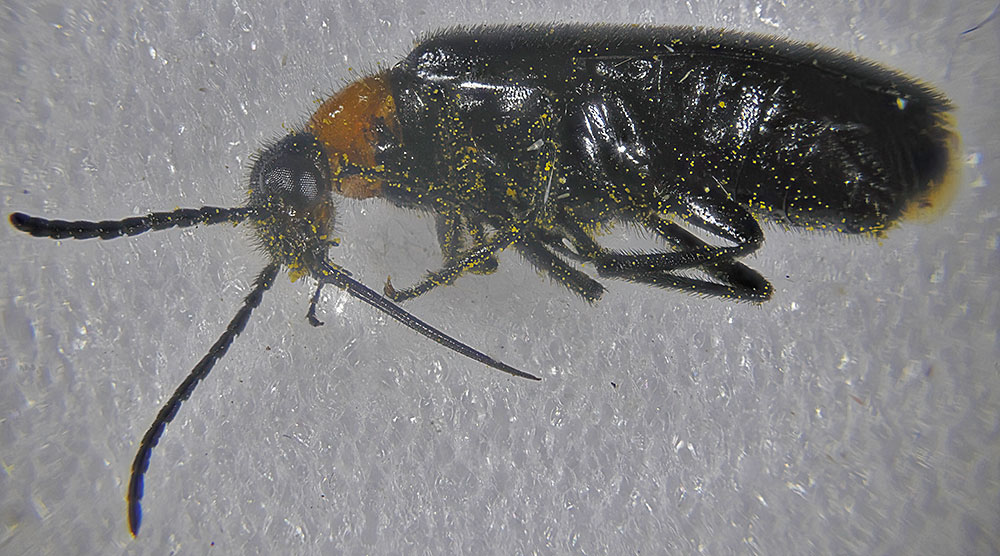

|
|
Neocrepidodera: These beetles eat mostly Poaceae and Asteraceae. Length 3 mm.
| |
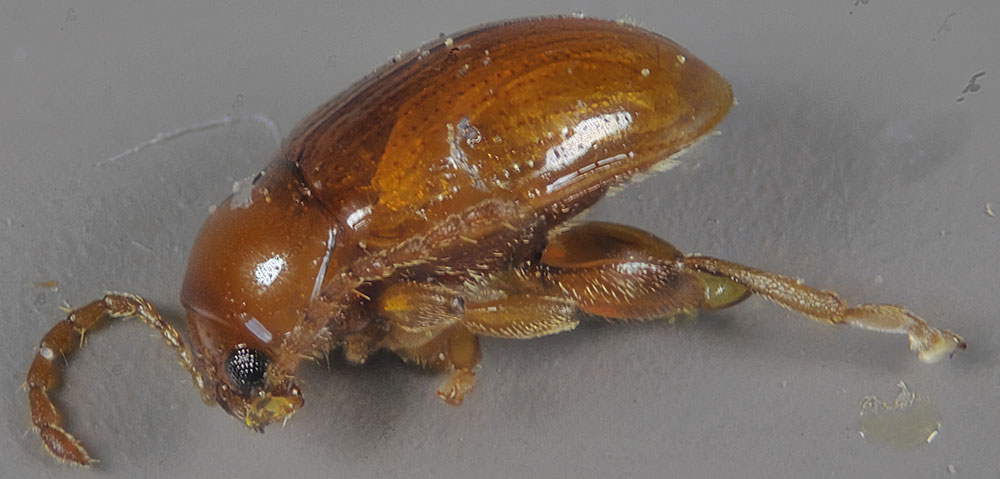

|
|
Nicrophorus vespilloides: This burying beetle buries small insects and larvae as food for
its larvae. Pairs are monogamous: a female assaults her mate if he tries to release sex pheromones
to attract other potential female mates. Length 12 mm.
| |
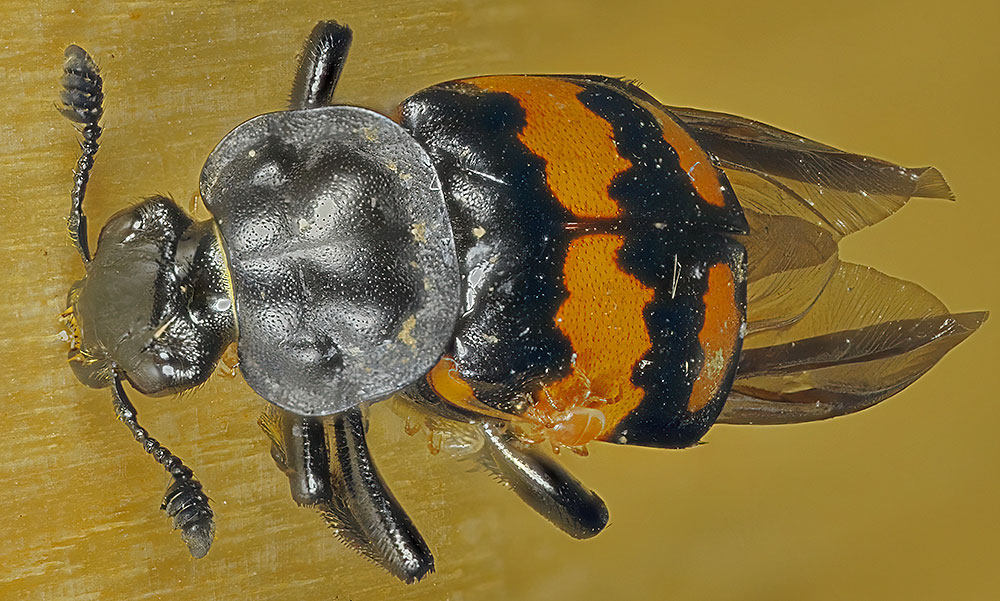

|
|
Olibrus semistriatus: These beetles eat the seeds and seed receptacles of Asteraceae.
Length 1.5 mm.
| |
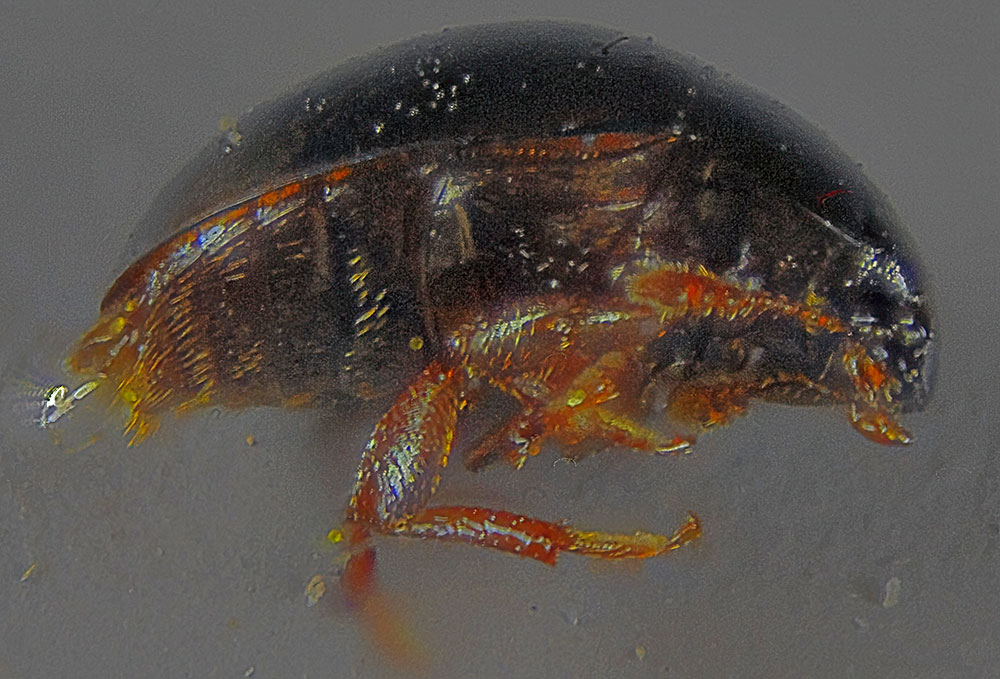

|
|
Orus dentiger: A predatory rove beetle that lives under leaf litter. Length 2.5 mm.
| |


|
|
Oryzaephilus surinamensis: A common stored products pest in houses. Length 3 mm.
| |
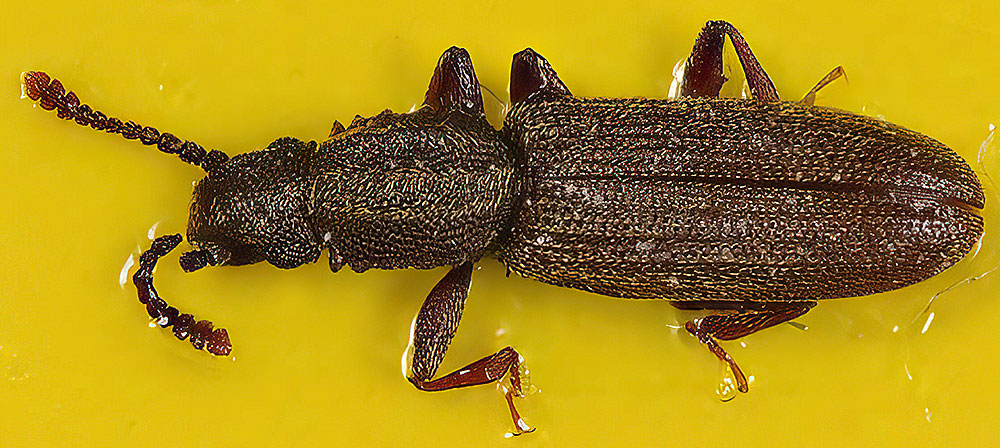

|
|
Oxypodini: These little rove beetles stand out with their sharply upcurved abdomen. Most
are predators of other insects and live under leaf litter or mulch. Length 3 mm.
| |
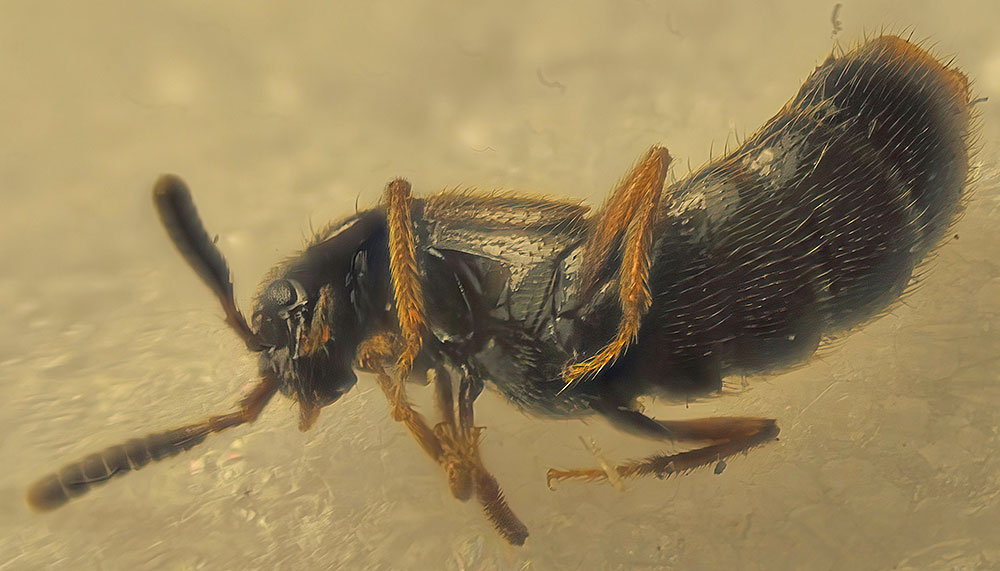

|
|
Pedilus lugubris: Adult males seek out blister beetles, climb onto them, lick off the
cantharidin the blister beetles exude and use the blistering agent to impress a female of their
own species. The cantharidin is transferred to the female in the male's sperm packet and eggs the
female subsequently lays are coated with it to protect them from being eaten before they hatch.
The resulting larvae eat fungus in soil. Length 8 mm.
| |
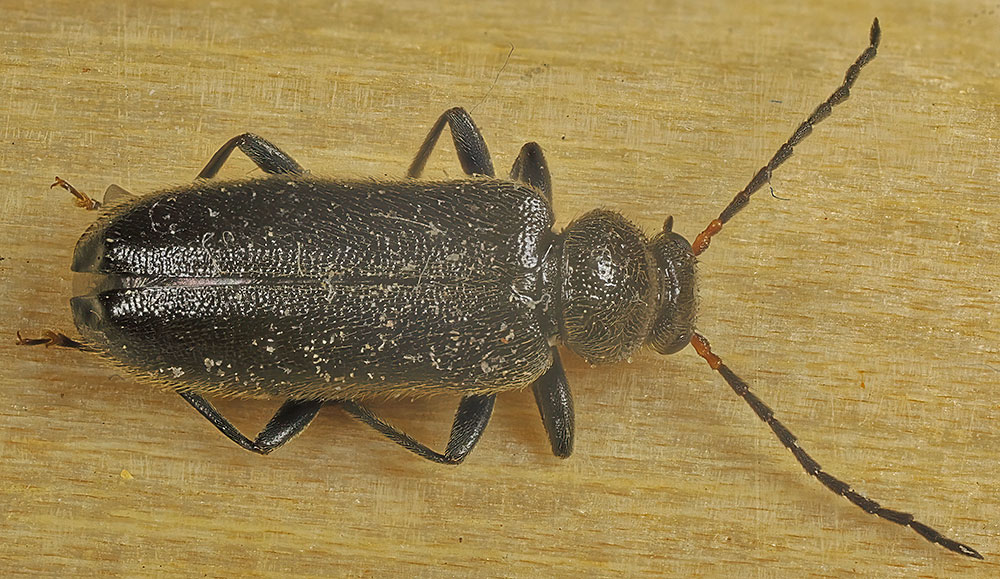

|
|
Photuris: The females of these predatory beetles mimic the light signals of smaller firefly
species to attract, kill, and eat their males; their larvae glow too. Most species can be told
apart solely by the flash duration, male flight behaviour during each flash, and the delay between
male flash and female response flash. Length 12 mm.
| |


|
|
Phyllophaga anxia: These scarab beetles, often called June bugs, eat leaves as adults and
grass roots as larvae. Length 16 mm.
| |
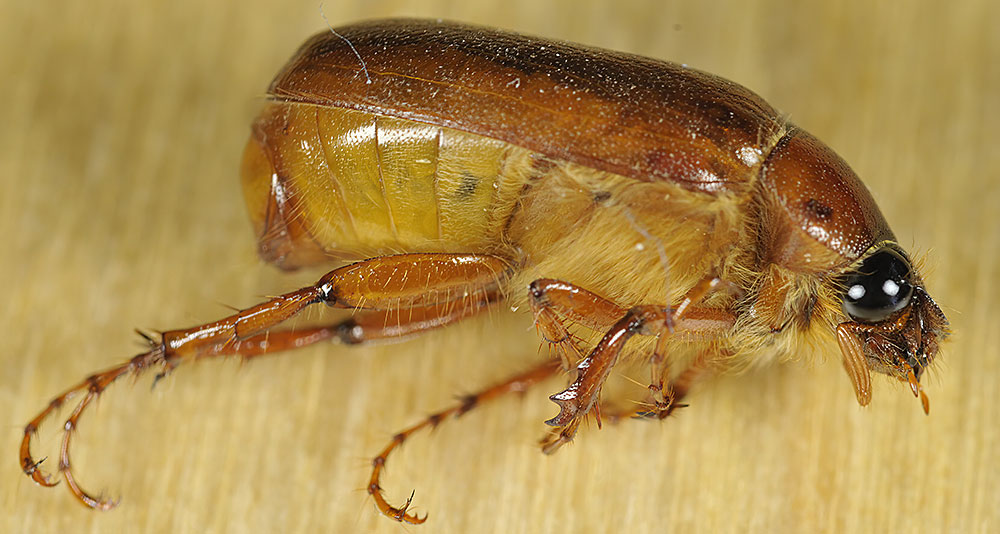

|
|
Podabrus rugosulus: This soldier beetle eats aphids and mites. Length 7 mm.
| |
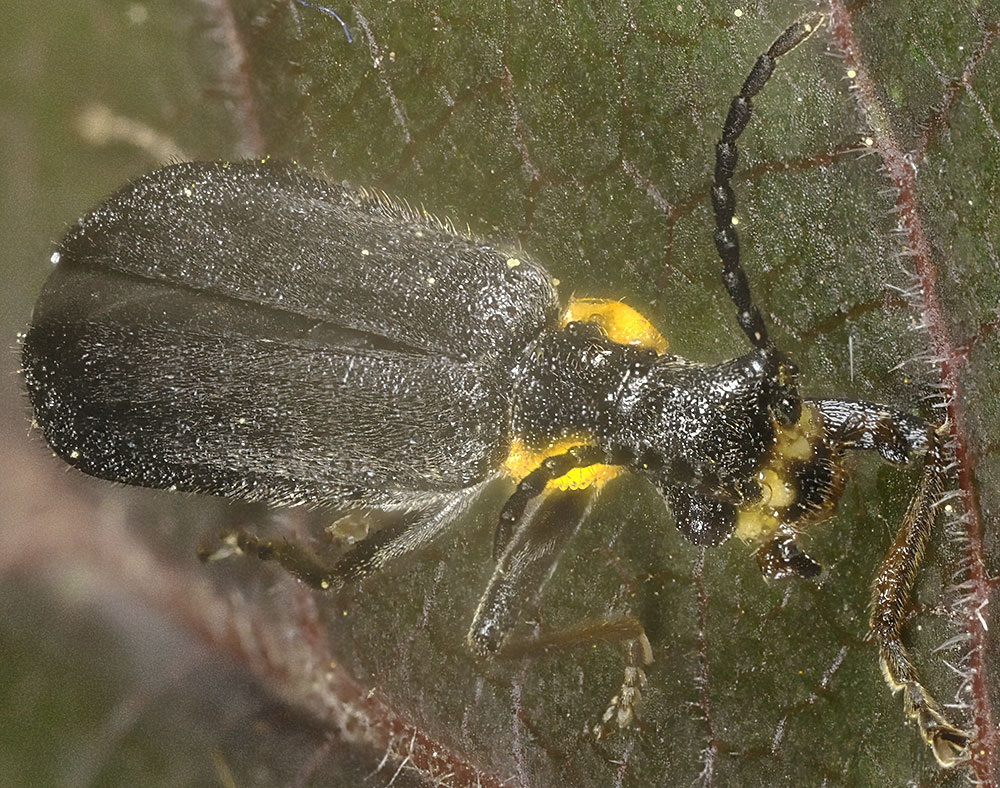

|
|
Polydrusus sericeus: This weevil is introduced from Europe and eats mostly Betula
alleghaniensis. Length 7 mm.
| |
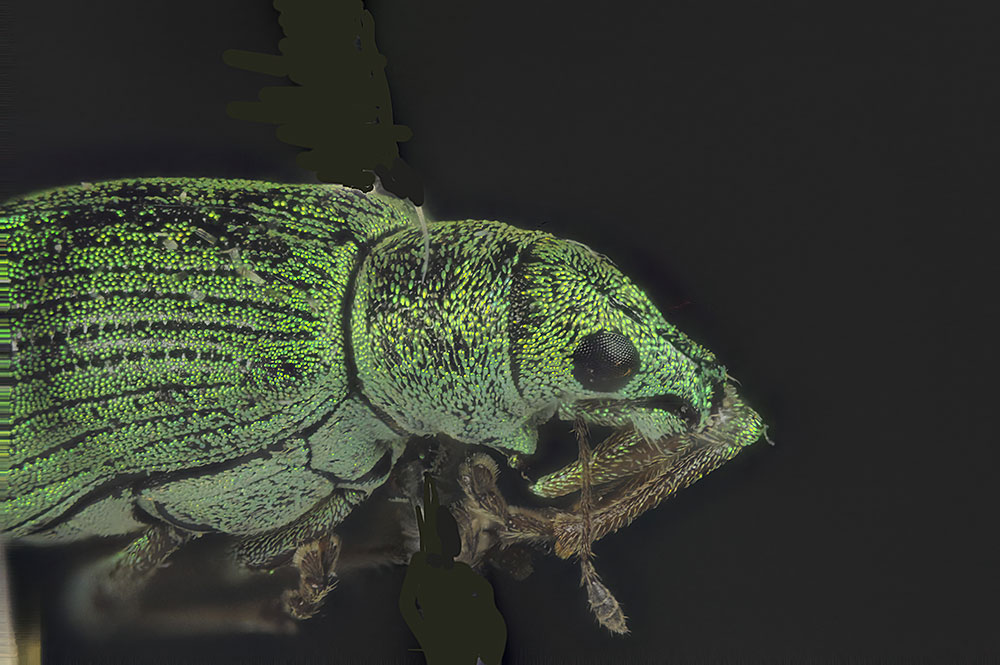

|
|
Plagiometriona clavata: Both as adult and as larva, tortoise beetles eat Solanacea.
Length 6 mm.
| |


|
|
Popillia japonica: Japanese Beetles appear in mid-July, to the torment of those who insist
on lawns that look like plastic. Adults are easily identified by the tufts of white hairs around
the abdomen, the grubs feed on grass roots. I'm no longer worried about things that eat grass,
having gotten rid of it, so ignore them. Native to Japan as the name implies, they arrived in
Eastern Canada in 1939. Length 10 mm.
| |
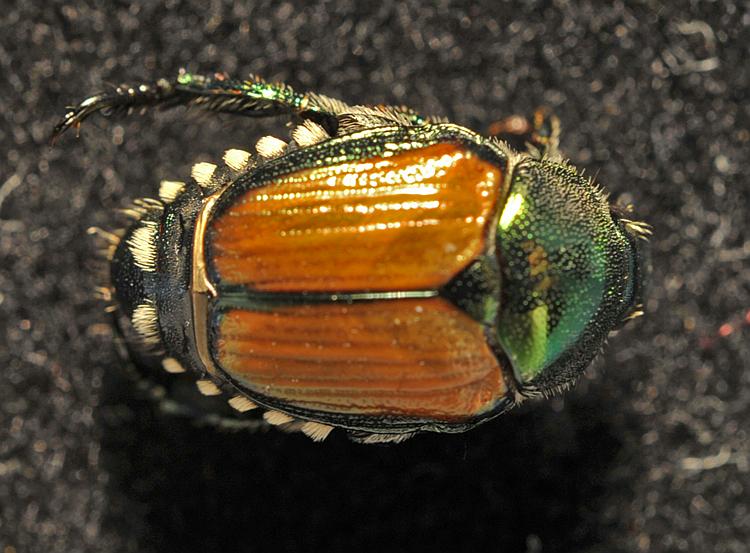

|
|
Propylea quatuordecimpunctata: Another non-native ladybug, this one arrived in Canada from
its native Europe about 1960. Length 3 mm.
| |
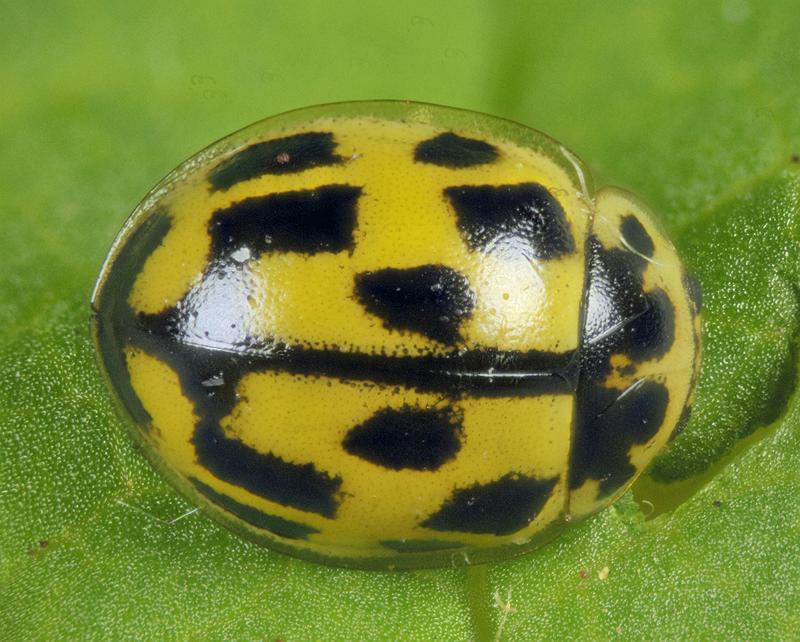

|
|
Stictoleptura canadensis: Red-shouldered Pine Borer larva feed on dead and decaying wood;
adults eat flowers. Length 11 mm.
| |
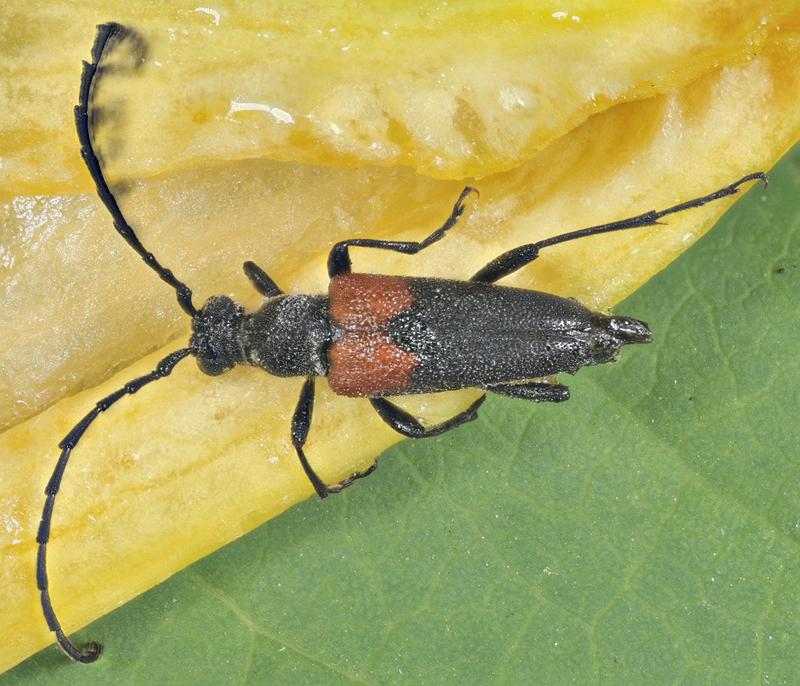

|
|
Tachinus corticinus: A rove beetle found in soil. Length 2.5 mm.
| |
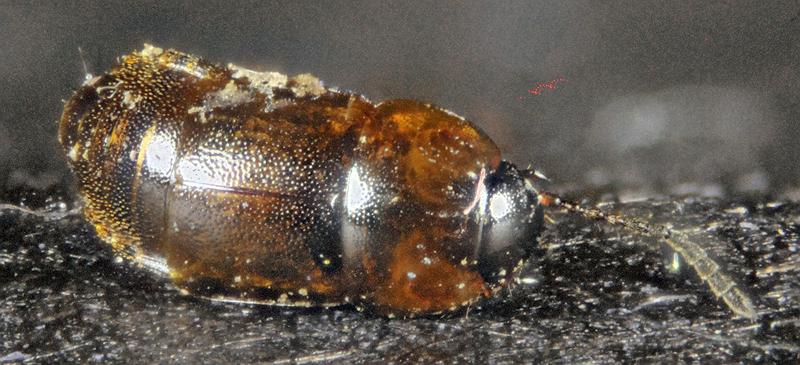

|
|
Telephanus atricapillus: Flat Bark Beetles live in leaf litter and eat fungi. Length
4 mm.
| |
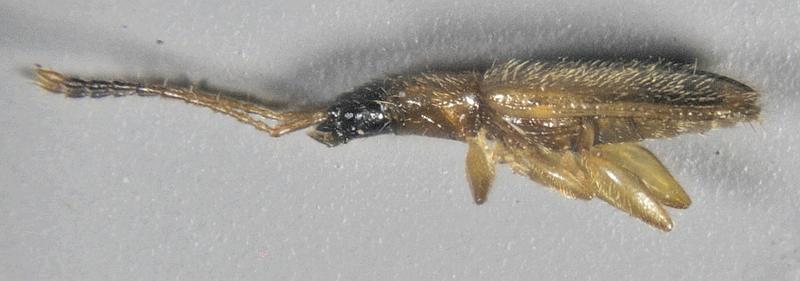

|
|
Tetraopes tetrophthalmus: Red Milkweed Beetle's larvae feed exclusively on Asclepias
syriaca, abundant in the nearby meadow. Length 12 mm.
| |
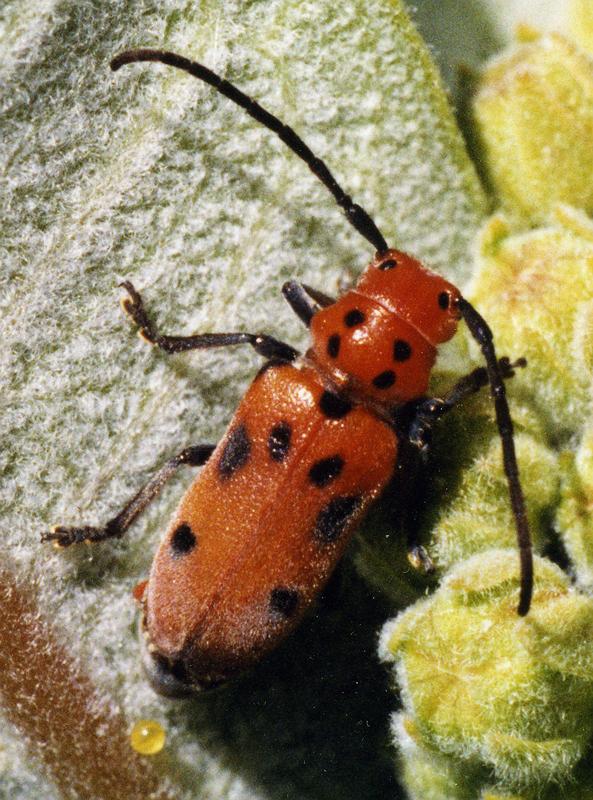

|
|
Trixagus chevrolati: This click beetle is normally found in forested areas; it's larvae
develop in wood. Length 2.8 mm.
| |
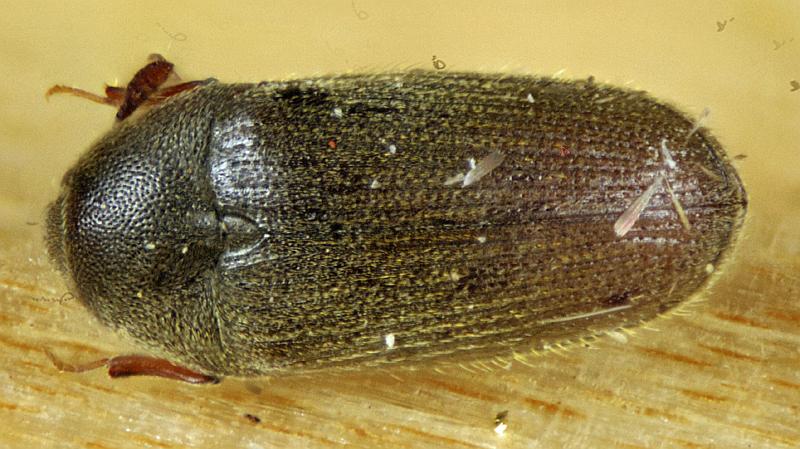

|

























































































































































